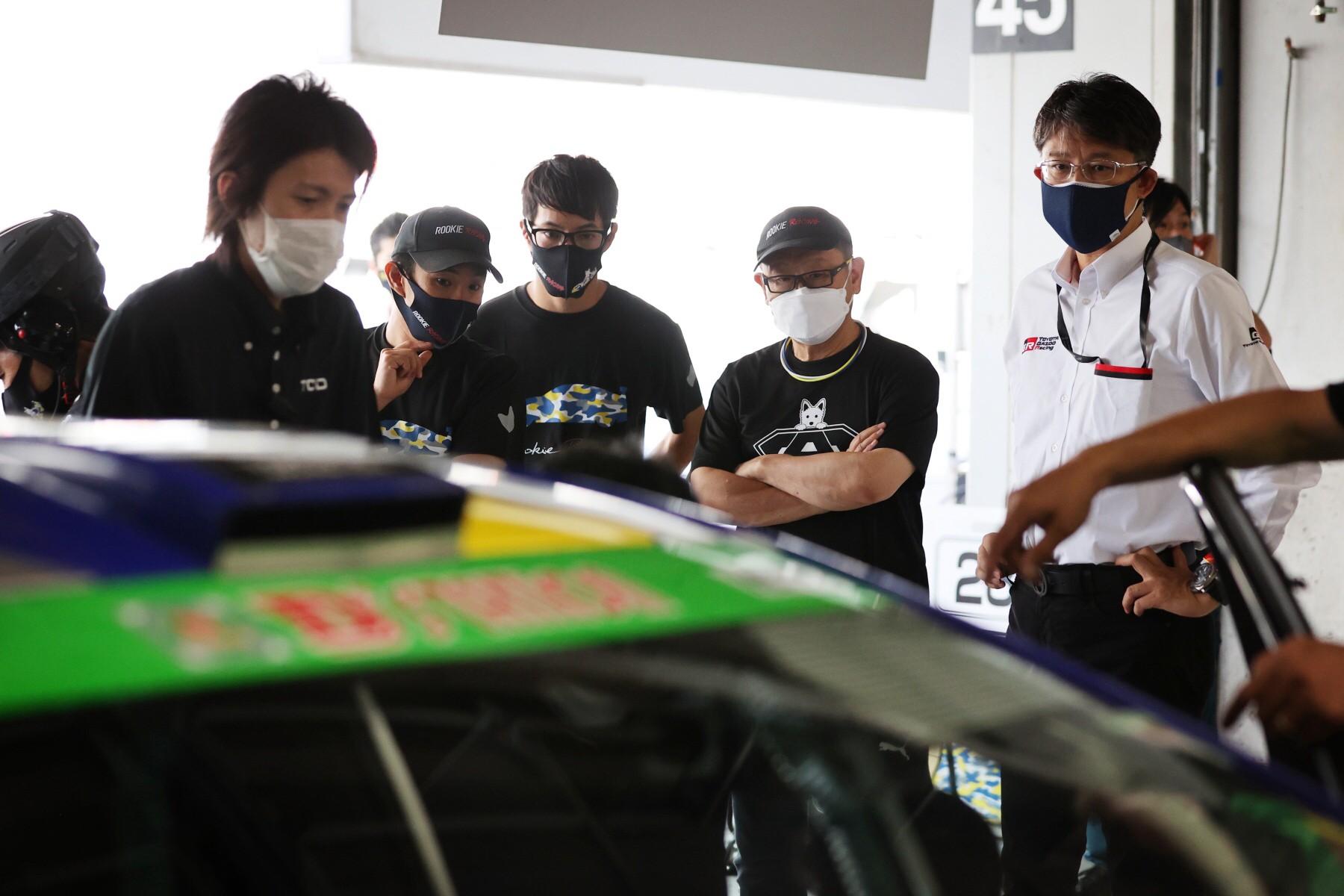
Toyota's endeavor with the hydrogen-powered engine has continued and seen greater progress each time. Four months on from the first race in May, this time at Suzuka, the hydrogen-powered engine's performance is hot on the heels of gasoline engines.

On September 18-19, the Corolla Sport equipped with a hydrogen-powered engine completed the fifth round of the Super Taikyu Series at the Suzuka Circuit in Suzuka, Mie.
Following on from Part 1, which focused on the expansion of carbon-neutral options and like-minded partners, this Part 2 will focus on how the car has evolved to stand shoulder-to-shoulder with gasoline engines in terms of performance.
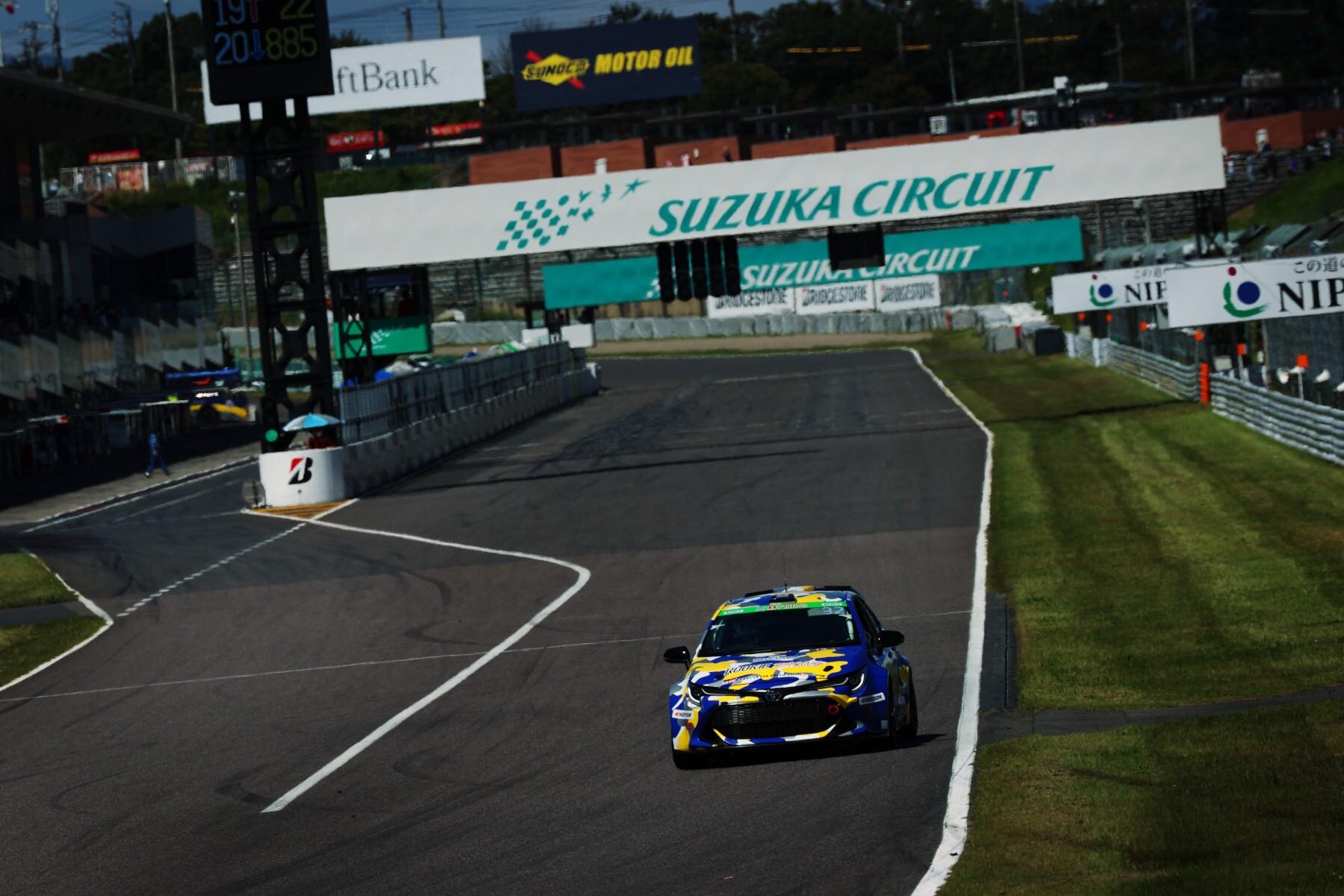
A change in the drivers’ conversation
As qualifying proceeded on Sept. 18, at a press conference, GAZOO Racing Company President Koji Sato spoke of a change that had taken place in the team.
President Sato
Looking at the car as a whole, I think we’ve shifted into a new phase at Suzuka. The feedback from our drivers has changed dramatically.
Until now, the engine had lacked power, and I think the discussion had mostly revolved around how the car could be set up to compensate for this shortfall or weakness.
From this round at Suzuka, the conversation has turned to potential improvements to make the car faster, such as making better use of aerodynamics on the 130R*.
*The Suzuka Circuit’s super high-speed corner, named for its 130m radius of curvature.
I take this as a clear indication that the car has stepped up a level.
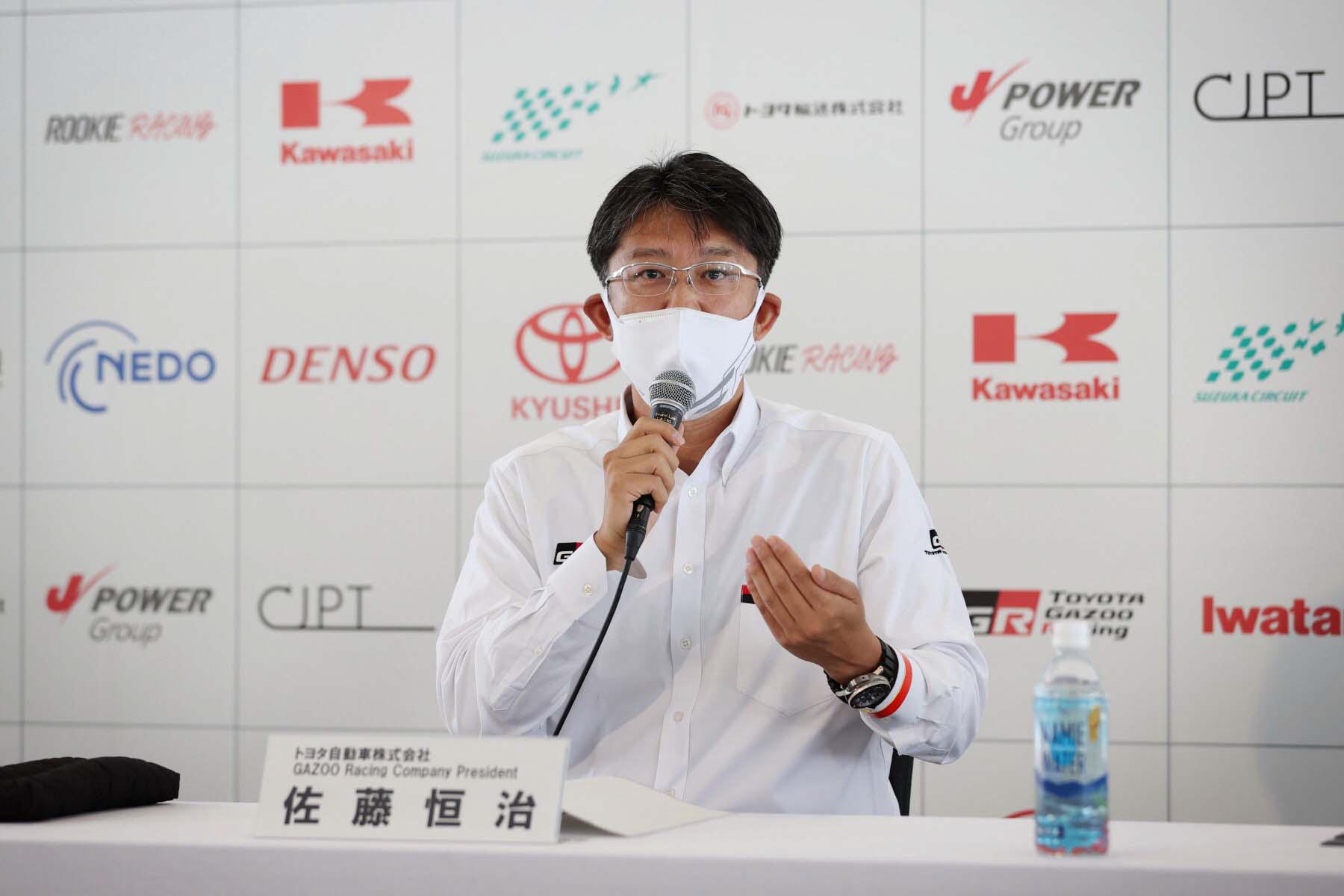
Matching gasoline engines in power and torque
President Sato looked back at the hydrogen-powered engine’s race debut at Fuji Speedway (Oyama, Shizuoka) in May.
President Sato
Compared to the Fuji 24 Hours where we barely finished the race while fixing issues, we’ve made great progress in terms of performance this time. The development is going incredibly well.
The Hydrogen Corolla’s engine is based on the one sold in the mass-produced GR Yaris, but at Fuji its output was 10 percent lower. It may have been even weaker.
Back then it was hard to wring more torque out even with the gas pedal down, but this time the engine achieves exactly the same performance as the GR Yaris.
We were able to push the development this far in the space of just three races because we set deadlines and worked in an agile manner, and I believe this speed was only made possible by starting out in motorsports.
An initial maximum output of 180kW has been boosted by 20kW to 200kW in just four months. This engine evolution has been felt by ROOKIE Racing team members firsthand.
As President Akio Toyoda, aka Morizo, puts it, “At Fuji we were competing with the ST-5 cars. In the hands of professional drivers, that car is now faster than ST-4”. Team Manager Tatsuya Kataoka also shared his impressions, saying, “The power output has increased since Autopolis (Hita, Oita), and now our speed on the straights definitely beats ST-4 cars. Because the car itself is heavy, the lap times remain at ST-4 level, but the engine’s power is now closer to ST-2”.
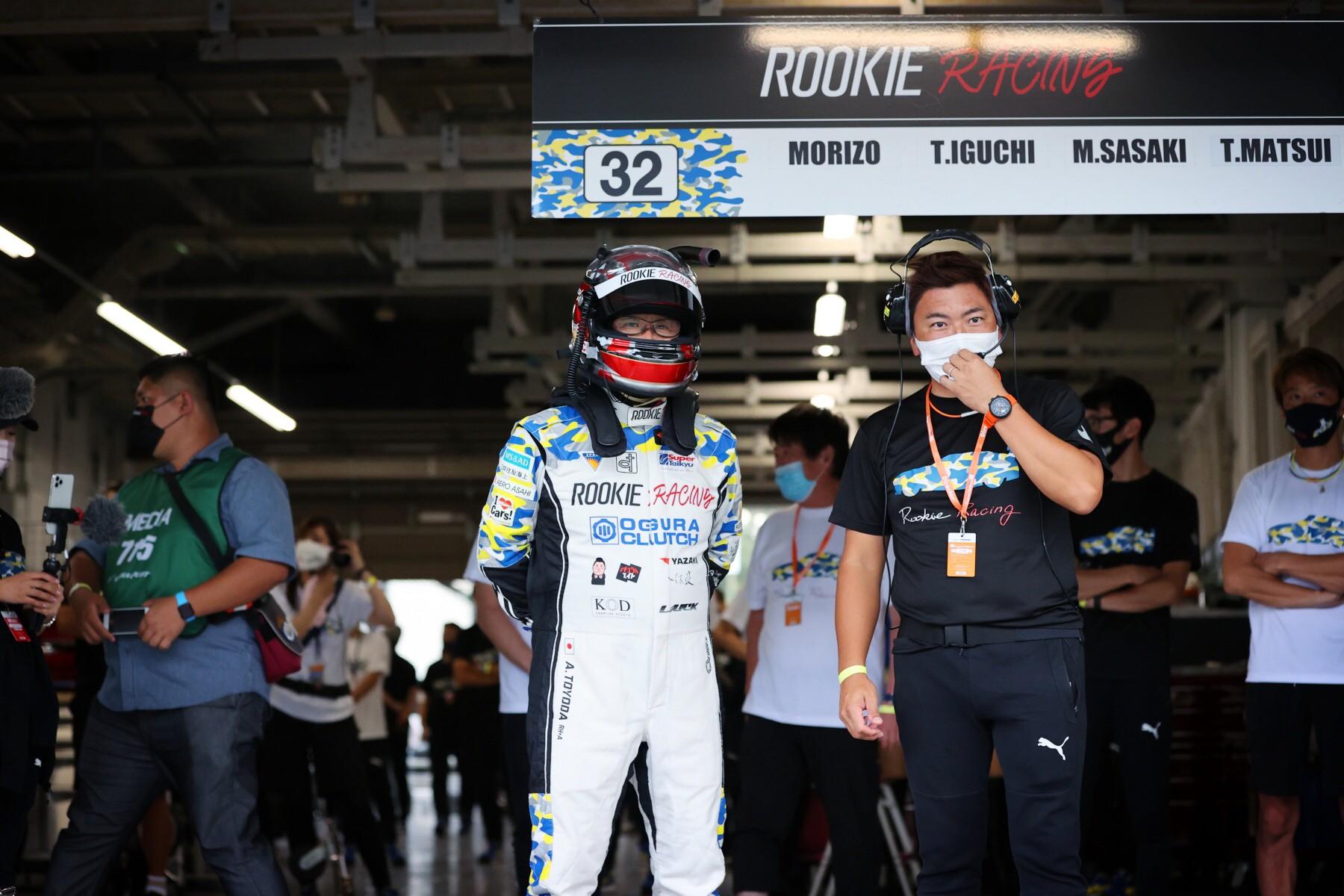
But the speed upgrade goes beyond full-throttle sprints.
President Sato
The engine’s power and torque characteristics follow a very similar curve to the GR Yaris’s gasoline engine.
The juiciest part of that torque curve, right above 4,000 rpm, is completely different from what we had at Fuji.
In terms of peak torque alone, it simply boils down to a “10 percent improvement”, but when you consider the whole circuit, the car is incomparably better at giving racing drivers the rpm range they like to use.
So how did the team increase power output?
Daichi Yamazaki (General Manager of GR Powertrain Development Division)
We have better visualization of the combustion chamber, which has allowed us to see how air enters and how the hydrogen mixes with it to cause abnormal combustion. We’ve been investigating that step by step.
As part of the process, we’ve repeatedly targeted and tested potential causes, analyzing whether these steps reduce abnormal combustion pressure or possibly eliminate it altogether.
This work has shown that we have room to boost performance and torque further while still limiting abnormal combustion, and we’ve been able to increase power output by optimizing aspects such as air input, the amount of hydrogen in the fuel, and the pressure of the hydrogen.
A key concern is fuel efficiency, which generally has a trade-off relationship with power, but the team has managed to maintain efficiency while increasing output.
The next race will be the final round of the Super Taikyu Series at Okayama International Circuit (Mimasaka, Okayama) on November 13-14.
President Sato showed his enthusiasm, saying, “Our motivation is to surpass gasoline engines in power and torque”.
Body improvements keep pace with engine
Engine progress alone does not make a car faster. It needs to be balanced with advancements in the car body.
Chief Engineer (CE) Naoyuki Sakamoto of the GR Project Operation Division, which oversees the hydrogen Corolla’s development, explains.
Sakamoto
Until now, the car was set up with the chassis supporting the engine, and the engine playing catch-up.
Now with the solid power output, improved acceleration, and increased top speed, we face the welcome challenge of needing to update the suspension system and aerodynamics, just as in a race car.
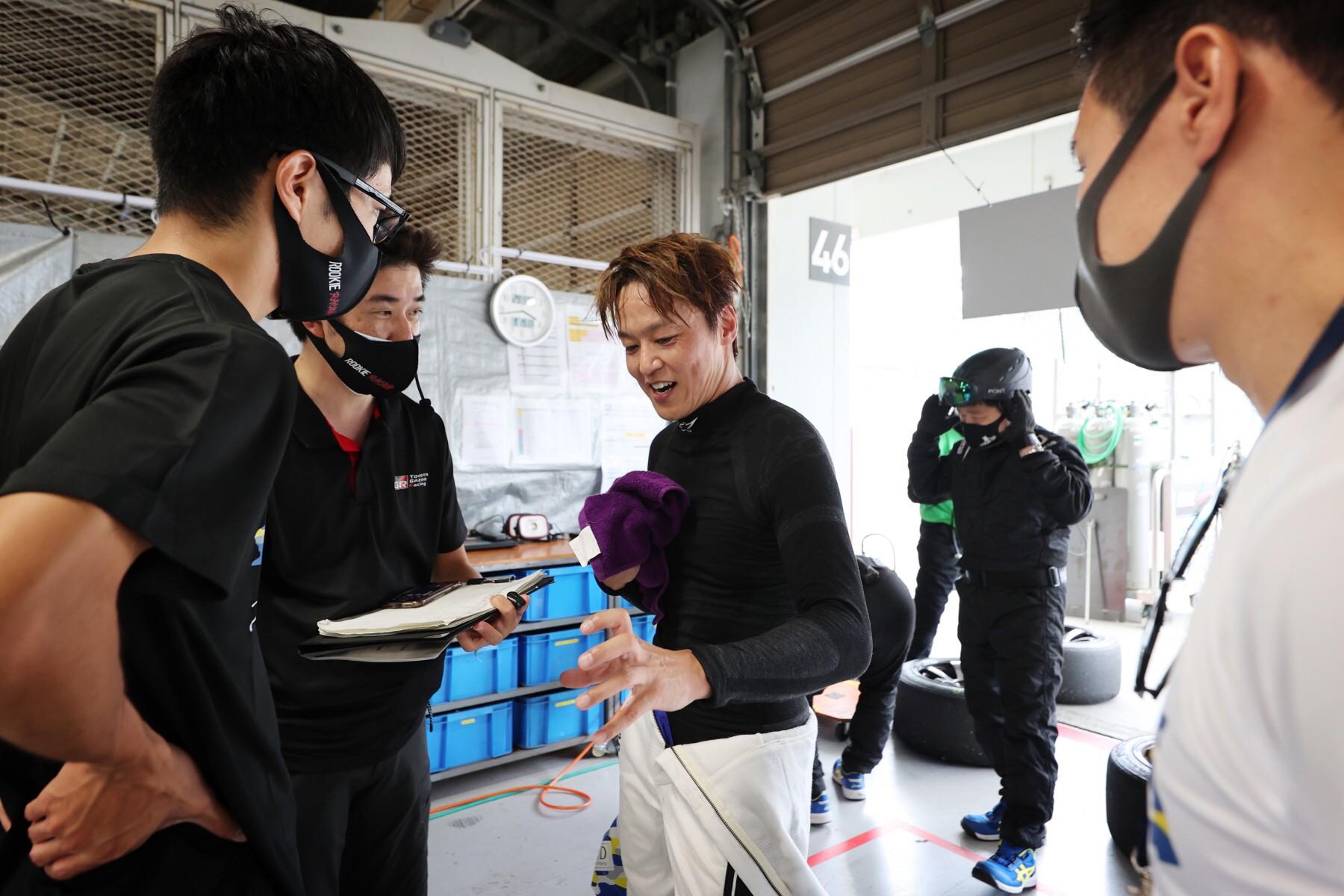
In this race, for example, the team has opted for a bigger tire size. As driver Masahiro Sasaki commented, “Until now, although the car is heavy, it was equipped with small 260 tires that were not up to the task, so the car wouldn’t turn. With the 280s this time, it moves like a racing car”.
President Sato tells how, at the Fuji race, “Every three minutes we would hear of pre-ignition (premature ignition, a type of abnormal combustion), and the drivers were also radioing it in all the time”.
The team was also very pleased to have driver Morizo offer a great deal of feedback to make the car faster.
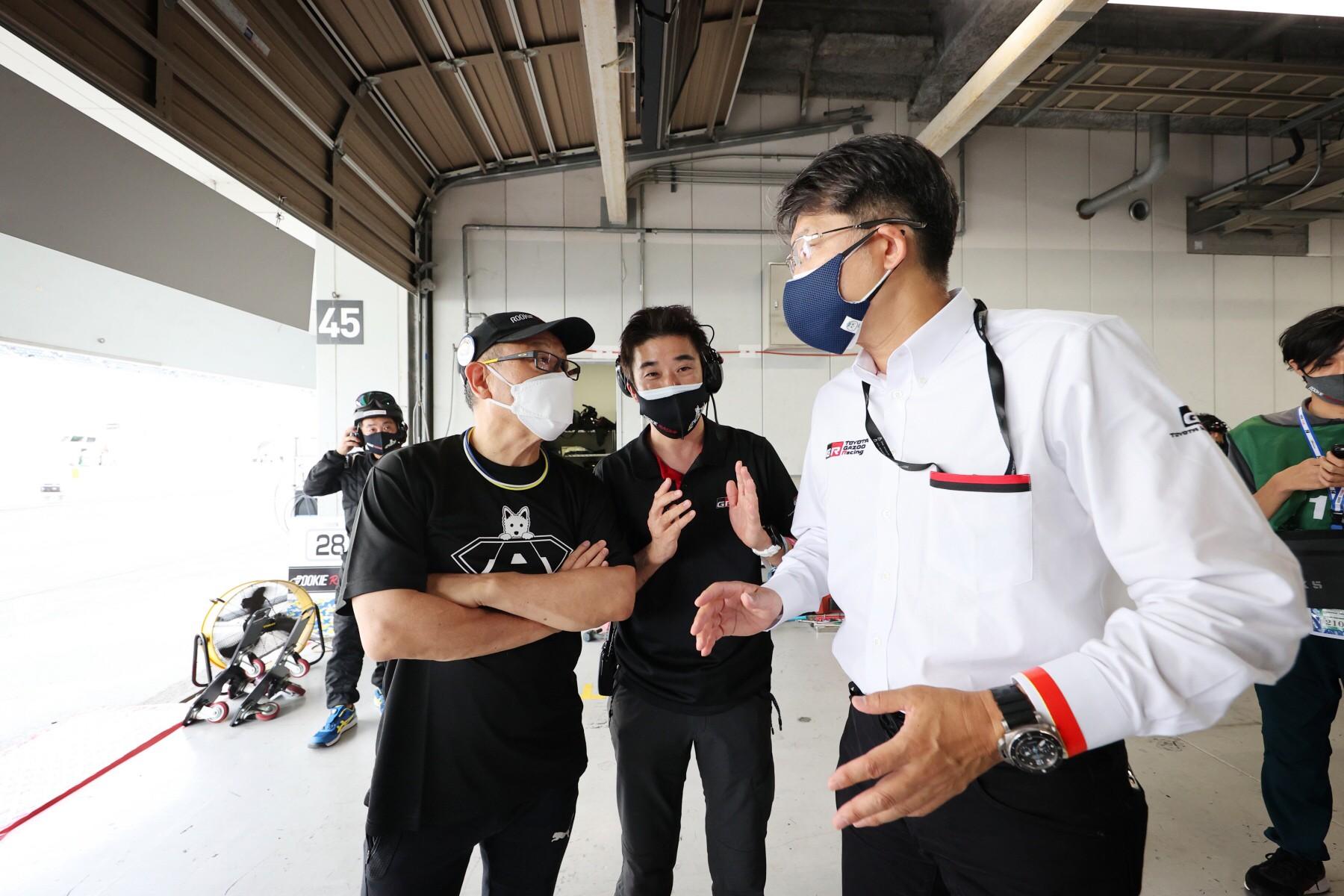
Refueling and connected technology also evolving
Hydrogen refueling time has also been slashed, from five minutes in the first round at Fuji to three minutes in the next race at Autopolis. At Suzuka, that was further reduced to two minutes.
The changes are clear to see. Two refueling trucks flank the Corolla parked in between, each delivering hydrogen into openings on both sides of the car.
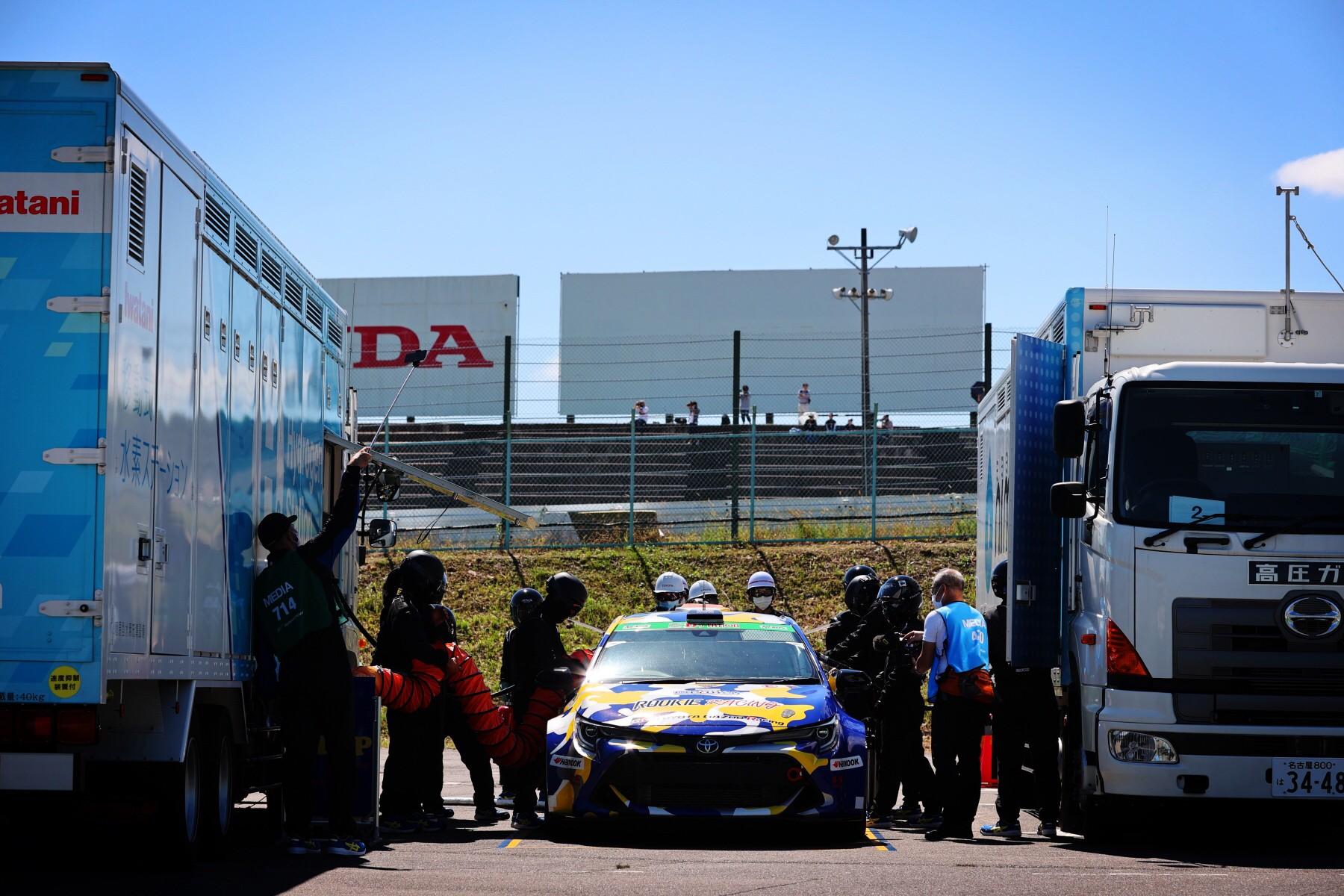
President Sato
While it may seem like there’s been a new technical innovation, it was just a simple idea of dividing the four tanks into two systems that could be filled twice as fast.
The car is set up so that the two systems can also be made into one, and we are trialing ways to control the differences between the two systems to ensure uniform temperatures and filling speeds.
The team also worked to advance the connected technology used to monitor vehicle data.
To date, Toyota has sold over ten million connected cars, mainly in Japan, North America, China, and Europe. Whereas these production models take tens of seconds or minutes to communicate with data centers, during this race the car sent real-time information in mere seconds.
In the previous round at Autopolis, the team used the commercially available communication system. To the frustration of engineers, however, this offered limited areas of analysis and data for visualization.
For this race, the onboard communication equipment was also redesigned from scratch, increasing the amount of data coming from the car and establishing a cloud-based environment for processing that information.
According to Connected Company President Keiji Yamamoto, “It now offers far more freedom, from being able to graph data analysis results to visualizing injection fluctuations. All manner of information can be accessed instantly, reducing the lead time required for analysis. You can really feel that this will increase the speed of development”.
Sights set beyond the racetrack
While still very much a work in progress, the hydrogen-powered car continues to evolve. Having gained the ability to be competitive on race day, the team is now engaged in lively discussions aimed at making the car faster.
And yet, as President Sato stresses, “We are developing the technology with an eye on the challenges that the hydrogen-powered engine might face in the real world. Rather than simply trying to win races, we want this to serve as a sort of trial, a test run”.
What improvements are needed to ensure the hydrogen-powered engine’s stability in all driving situations?
When refueling multiple vehicles at a hydrogen station, how do you regulate overall pressure, and what sort of speeds are needed for widespread adoption?
If real-time communication and analysis becomes possible in production cars, will the training of new engineers keep up?
With such various points in mind, the team always sets its sights beyond the racetrack in developing the hydrogen-powered engine.
